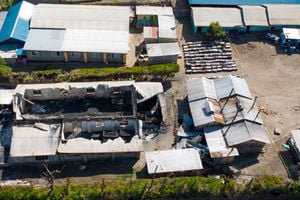
The cost of living in Kenya has skyrocketed.
| ShutterstockOur Columnists
Premium
Controlling the cost of living – the right choices
In the battle to bring the cost of living (inflation) under control, there will be no quick fixes nor magic wands. But there are right and wrong policy choices.
To be clear “explanations”, such as war in Ukraine, war in Gaza, high international oil prices and so on, are not policy choices. What the government can do is provide short term relief to citizens while simultaneously undertaking longer-term structural reform. Both require bold choices.
Here is why and how.
First and crucially, monthly inflation has taken on a strong and sustained upward trend, doubling from four to eight per cent over the last six years.
What is causing this sustained upward trend and that makes it harder to control inflation? The large and growing structural deficit. Why is it large? Why is it growing, and why is it structural? A deficit is not a naturally occurring phenomenon.
It is the result of choice to spend more than a country can raise in taxes. It is structural because of persistent choice. Yet in living history, we have had balanced budgets.
The fundamental policy choice is about expenditure. At the conceptual level, inflation is too much money chasing too few goods. That is why the primary medicine to reduce inflation, applied by all central banks, is to reduce aggregate demand. But increased government spending adds to the very aggregate demand that the Central Bank is trying to slow down!
The current administration is increasing, instead of reducing and re-orienting, spending. This has three effects. Higher taxes, higher interest rates, and less credit to the productive sectors.
The finance act 2023 was all about higher taxes. The plan for the medium term (medium term expenditure framework or MTF), in Treasury jargon, calls for still higher spending and taxes for each of the next two years. To survive, businesses must try to pass on these effects to their consumers, which makes the cost of living problem worse.
To attract capital to finance the large deficit, government has been offering incredibly high interest rates, with the benchmark 91-day treasury bill now above 15 per cent. These high interest rates are hurting both farmers and businesses, who are crowded out of the credit market, slowing down production. They are now paying 30-32 per cent on short term loans.
The right policy choice is to cut spending in order to reduce the budget deficit, and re-orient spending to both provide short-term relief to citizens, and stimulate production.
Second, the primary drivers of seasonal variability in the consumer price index (CPI) are food and fuel prices. Food prices rise and fall rapidly, mainly influenced by rains, being high during dry spells and low when we have good rains. Variations are further influenced by the prices of oil in the international markets.
To manage both requires deep changes – increased food production and a switch to alternatives to oil.
Increasing food production is far more complex and broader than simply offering subsidised fertilizer. This policy has been around for at least 15 years and through three successive administrations, all with mixed results.
It almost always suffers logistical and governance problems. This year, the Central Bank’s July agriculture sector survey found that less than half the farmers had received the subsidised fertilizer by the close of the main planting season.
Farmers also need seasonal credit for other inputs, and interest rates are too high for them to make a profit. And that is assuming banks are willing to lend. The Agricultural Finance Corporation has insufficient resources to really make a difference.
The irrigated agriculture program taunted by this and previous administrations has all but stalled over governance and procurement issues, particularly in the dam construction. Kimwarer and Arror dams are the most infamous. But almost all dam projects have had problems.
Switching to alternatives such as renewables will take time, and needs strong incentives to attract necessary investment. The investments will of course create much needed jobs. Getting rid of the expensive thermal plants is way complicated and costly given existing contracts.
Third, the management of the exchange rate must be in-sync with the choices being made on food and fuel. A strong shilling could help both strategies. Food imports (in dollar terms) are up 36 per cent, year to August 2023.
This is likely the effect of the duty-free window for food imports allowed last December by the CS Treasury. But the 25 per cent depreciation of the shilling transmits directly to the cost of that imported food, cancelling out the cost reduction effect of the duty-free window.
The same is true for petroleum. Increases in pump prices in September and October were partly driven by the weakening of the shilling.
A strong shilling would, however, hurt exports. Buyers of Kenyan made goods and services would find it costs them more, thus buy less.
Although the exchange rate is a price, it reflects certain choices. An attractive environment increases foreign direct investments and portfolio flows. Both have traditionally been how the shillings has stayed relatively strong. The country typically imports more than it exports. But capital flows have previously compensated for the trade deficit. But no longer, resulting in the rapid slide of the shilling.
That attractive environment must promote and support domestic production. With the latter declining, we are back to too few goods for the level of money supply. Hiking interest rates creates further contraction.
Policy choices not only need to be the right ones, they have to be coherent, consistent and synchronized.
@NdirituMuriithi is an economist
Find more by the writer HERE





